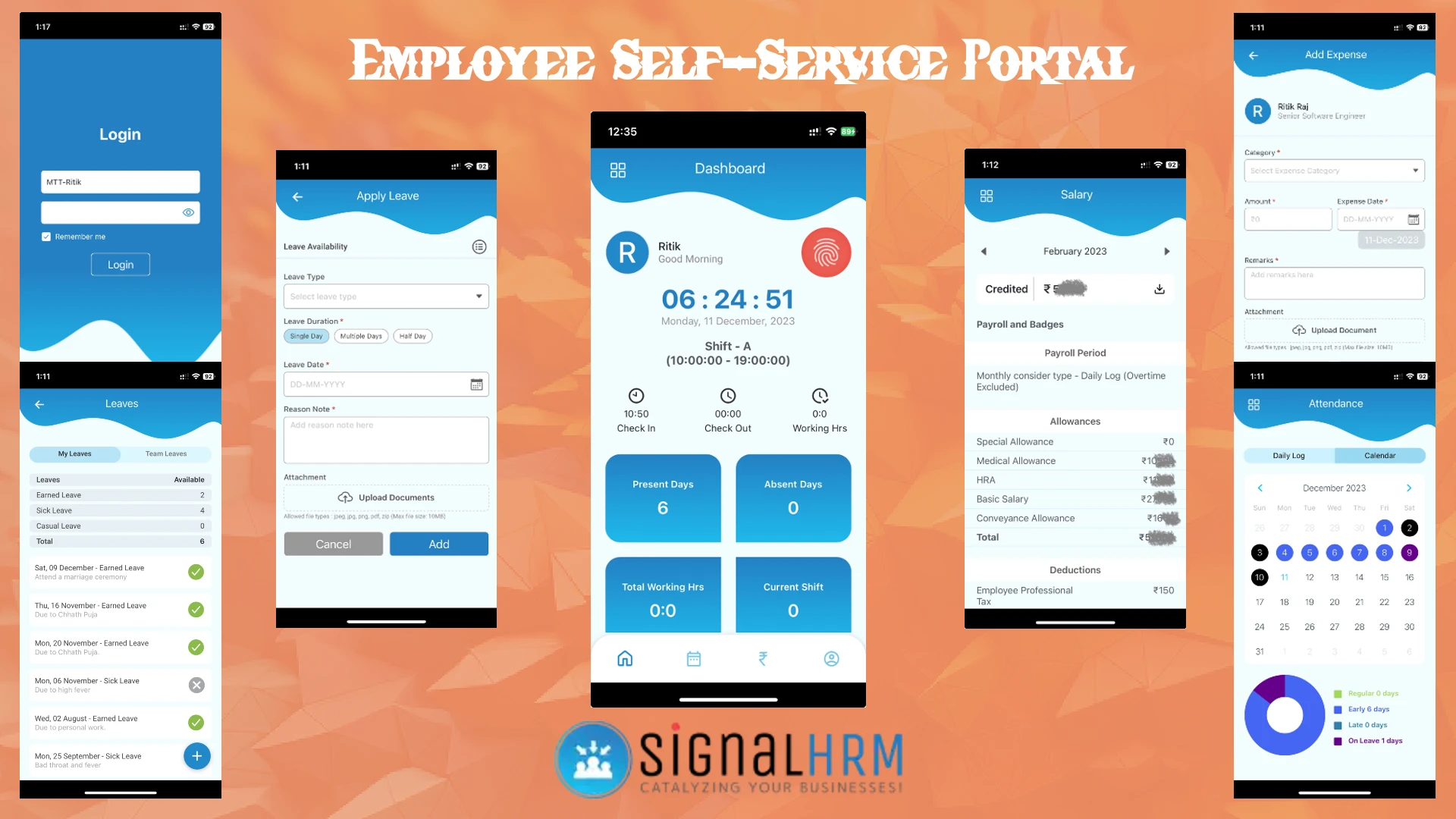
The main advantage of HRMS management systems lies in allowing the employees to carry out HR-related tasks, reducing the dependency on the HR department. Employee self-service is emerging as an important trend in HR technology, boosting the efficiency of HR departments by automating manual tasks. It empowers organizations to redefine the core responsibility of HR since the employees can handle HR-related tasks such as updating personal information, requesting time off, and managing benefits. This blog highlights the important features and aspects of ESS and how you can use this technology to transform HR.
What is an Employee Self-Service Software?
Employee self-service software is a secure software offered by the human resources department that enables employees to autonomously access and manage their individual HR-related information. Employees can update personal information and importantly, lower the burden of the HR professionals, increasing employee independence and engagement.
Features of Employee Self-Service Software
- Offers access to HR resources, company policies, and procedures.
- View and update personal information.
- Retrieve salary slips and income tax information.
- Manage leave requests and approvals.
- View and manage benefits and expenses
- Submit feedback and reviews.
- Get notifications and reminders.
- Access to training and development programs.
Benefits of ESS Software
1. The employees can easily request time off and update their working hours, eliminating the need to notify different people for leave. Also, the HR professionals don’t need to track down all the employees individually for information collection, cutting down manual administrative tasks.
2. ESS allows the employees to view the information stored on ESS to ensure its accuracy and authenticity. All the information related to company policies, attendance records, and leave balances is readily available on the portal. Therefore, they don’t need to shoot emails regularly to the HR department for their queries.
3. Updating employee information timely holds the utmost importance. Imagine you need to contact an employee during emergency leave, and the number you have isn’t available. Such situations become tricky for the HR teams. Ask the employees to update their records when they change, reducing the risks of inaccurate information.
4. Employee self-service software enables the teams to share their ideas and feedback to accomplish the project. Elements such as calendars for birthdays, work anniversaries, and other significant milestones allow easy interaction with the team members and foster social interaction. As the trust and engagement between the employees and employers strengthens, individuals feel a greater sense of connection with the organization.
5. The HR teams of an organization have confidential information (personal and financial) data of all employees. Though ESS portals allow employees to edit the information, ensuring the security of these records is quintessential. The ESS software implements adequate privacy and security measures on the server and clients. Also, important data can be migrated to the cloud ensuring higher security.
6. ESS software lowers the dependency on physical files and folders, thereby contributing to adopting a paperless work culture. HRMS software with the ESS portal helps you save all the records digitally.
Important Considerations for Implementing an Employee Self-Service Software Planning:
1. Organizations must set clear objectives (in alignment with the HR and business goals) about why they need ESS software and what results they want to obtain.
2. Carry out comprehensive research about the features and functions that the ESS software must have to overcome the existing challenges.
3. Explore different vendors and choose the one that suits your requisites such as customization, support, and scalability.
4. Decide on the budget. How much money can the organization spend on the project? It should include all costs including hardware, infrastructure upgrades, and training. Set a timeline with critical milestones and resources needed to accomplish the project.
Training and onboarding:
Organizations must conduct a training program for the end-users to train them to use the ESS portal. They can use different formats such as self-paced online modules, in-person sessions, or webinars to cater to employees with different learning preferences. The HR team must also be trained to understand the administrative features and learn how to offer support to the employees.
Integration
Assess the compatibility of the ESS software with the existing HRMS management system and infrastructure. The integration may involve connecting with the attendance management system, leaves management module, and payroll module. It is important to have a concrete migration strategy to transfer the existing employee data to the ESS portal to ensure data accuracy and integrity.
Security:
The ESS software must be designed and implemented with robust security techniques to protect the private information of the employees. Limiting access to sensitive data, encryption, and security audits detect the vulnerabilities and protect the system. Further compliance with data privacy regulations such as HIPPA and GDPR is of extreme importance. Consent management and data retention policies must be included in the ESS portal to inform the employees how their data will be used. Multifactor authentication validates the identity of the users and prevents unauthorized access.
Conclusion
ESS has truly transformed the working of HR processes. Adopting HRMS management software with robust ESS systems helps organizations improve their efficiency and cultivate a culture of trust and transparency. SignalHRM is a leading provider of HRMS management software. We help you to manage all aspects of HR and offer quality HRMS software that complements your business needs. Contact us to know more.